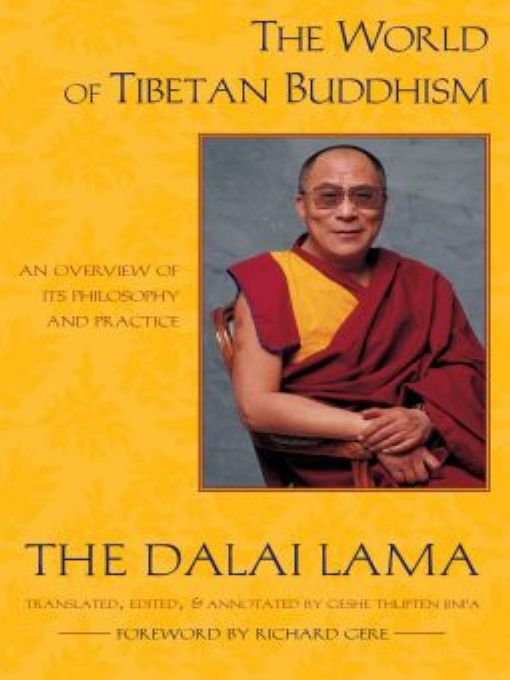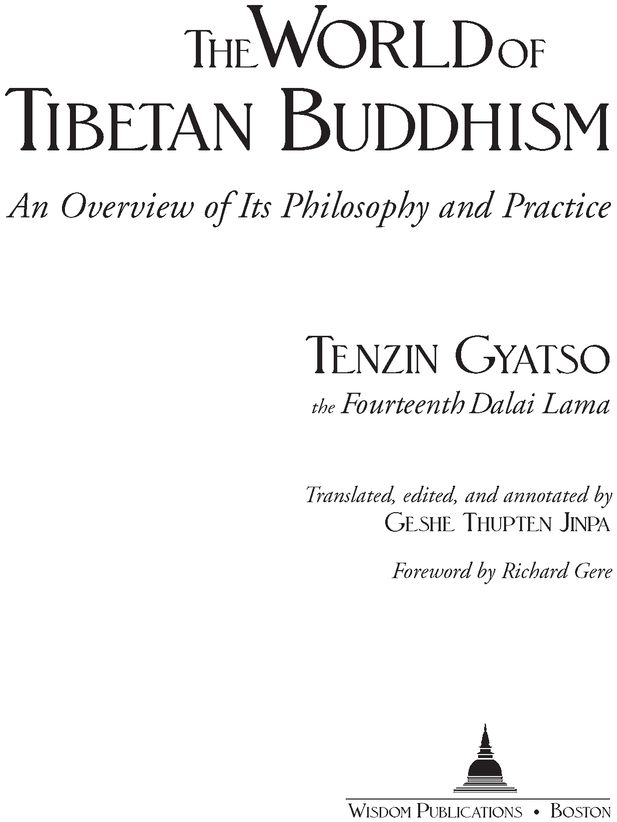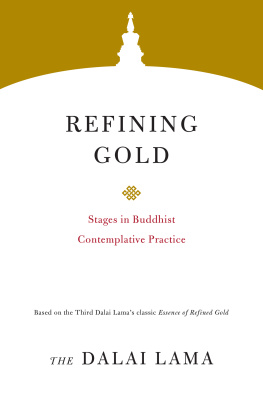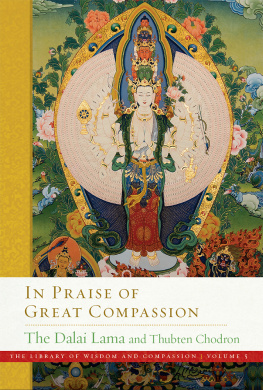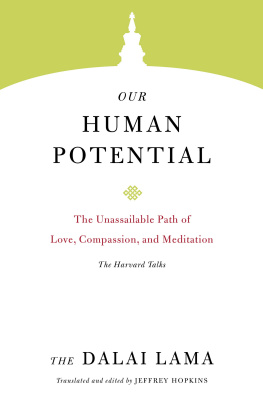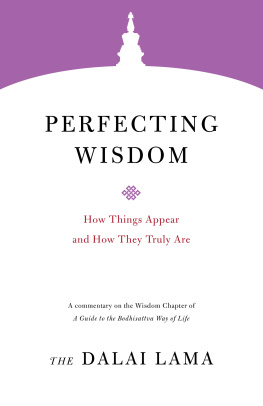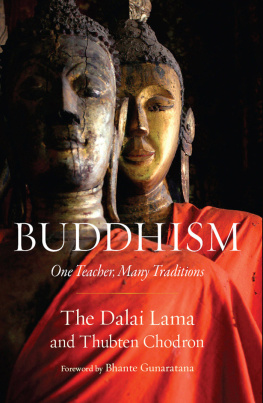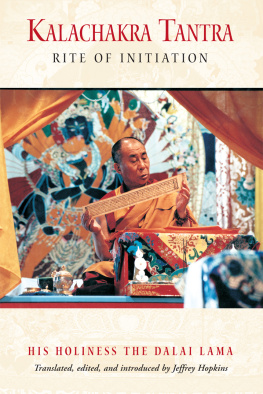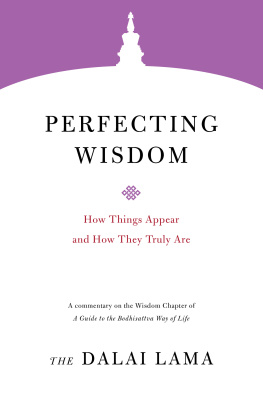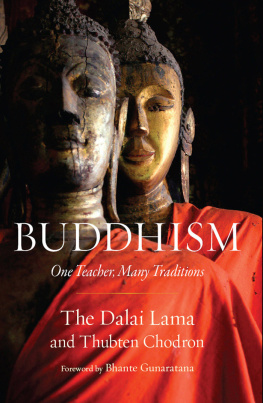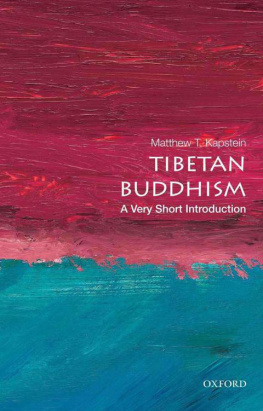Table of Contents
FOREWORD
THE GERE FOUNDATION is honored to continue its sponsorship of important books by His Holiness the Dalai Lama published by Wisdom Publications, the first two in the series being Opening the Eye of New Awareness and The Meaning of Life from a Buddhist Perspective.
In the present volume, The World of Tibetan Buddism, beautifully translated and edited by Geshe Thupten Jinpa, His Holiness offers a clear and penetrating overview of Tibetan Buddhist practice from the Four Noble Truths to Highest Yoga Tantra with, as always, special emphasis on the practices of love, kindness, and universal responsibility. He asks us to be mindful and present in the moment, to be constantly vigilant in monitoring our attitudes, actions, and motivations, and to engage in a thorough-going research on our own mental functioning and examine the possibility of making some positive changes within ourselves. Not easy tasks! Few of us are capable of the monumental courage and iron determination required to achieve the enlightened state of Sakyamuni, Nagarjuna, Milarepa, or Tsongkhapa, or the other saints and heroes. But we can, with sustained practice, bring more clarity to our minds and feel the warmth of our opening hearts.
Recipient of the 1989 Nobel Prize for Peace, the Dalai Lama is universally respected as one of our greatest spiritual friends. He is the product of an unbroken lineage extending back 2,500 years to the historical Buddha. His forty-five years as a spiritual teacher and political leader are unique in our time. He has often said, My religion is kindness.
Since the Chinese invasion of independent Tibet in 1950 and his harrowing escape to India in 1959, His Holiness has worked tirelessly to free his people from a systematic genocide that has killed 1.2 million Tibetansone fifth of the pre-invasion population. His Holinesss unfaltering compassion for even those who continue to destroy his country is the mark of a true and reliable bodhisattva. This book is a wondrous opportunity for us all to make contact with such a man and his teachings.
The Gere Foundation is proud to be associated with His Holiness and his message of universal responsibility and peace, and pleased to support Wisdom Publications in its efforts to promote these ideals. May this book help bring happiness and the causes of future happiness to all beings.
Richard Gere
New York
PREFACE
OVER A PERIOD of four days in the spring of 1988, His Holiness the Dalai Lama gave a series of lectures on Tibetan Buddhism in London organized by the Tibet Foundation, London. His lectures were, as usual, conducted in a personal and informal style that, nevertheless, in no way compromised the seriousness and the profundity of the subject matter. Looking back, I feel that those lectures marked an important turning point in His Holinesss method of teaching Buddhism to a modern audience. On that occasion, he put into full swing a novel but sophisticated system of presenting the Buddhist path. Based on four simple premises, that there is suffering, that it has an origin, that there is an end to suffering, and finally, that there is a method for ending suffering, His Holiness presents the entire superstructure of Tibetan Buddhismits philosophy and practiceincluding the esoteric path of Vajrayana Buddhism. He beautifully demonstrates how all aspects of the Tibetan Buddhist path must and can be perceived as both emerging from and being firmly rooted in the framework of the Four Noble Truths. In short, His Holiness shows us with convincing explanation how Tibetan Buddhism is, in the true sense of the phrase, complete Buddhism. The result is a unique overview of Tibetan Buddhism that combines His Holinesss incisive, penetrating insight, profound reflective analysis, and deep spiritual experience, woven with a breathtaking scope of scholarship in all areas of Buddhist thoughtall of this, of course, in a style that never fails to radiate a joyful exuberance of life and true affection toward all.
It has been a real joy to work on this project, and I am very happy that now others can also share in the experience. Many people have made significant contributions towards the success of this endeavor. I would like to thank Sally Ward for undertaking the difficult task of transcribing the tapes from the teachings, and Venerable Sarah Thresher, my first editor at Wisdom, for doing a second transcription with the necessary initial editing. I would also like to thank my editor at Wisdom, Venerable Connie Miller, for her valuable comments and criticisms, which contributed a great deal toward improving the English. My thanks also go to Vincent and especially Maria Montenegro and Robert Chilton for hours and hours of editing and research.
It has taken a long time for the lectures to appear in book form. As much as I had wished to see this teaching published, three years of study at Cambridge, England, between 1989 and 1992 delayed work on the manuscript. In retrospect, however, this delay has had a significant consequences in that when I finally had the time to work on the book, I was in a better position to appreciate the subtleties of many important English philosophical terms. For this, I am deeply grateful to the Inlaks Foundation, London, and my friends Geoff Jukes, Morna White, and Isabelle White, whose generosity made it possible for me to study at Cambridge.
In this book, I have attempted to adopt a style of translation that reflects, as faithfully as possible, His Holinesss thoughts as if he were expressing them in English. In this, I have had a ready guideline in His Holinesss own lectures as many of them have been at least partially given in English. These lectures often present a comprehensive overview of Tibetan Buddhism; correspondingly, I have tried to provide extensive footnotes and a bibliography for the benefit of those who wish to explore specific areas of Tibetan Buddhism in greater depth. For similar reasons, a glossary of important terms with their Tibetan and Sanskrit equivalents has been compiled. For their assistance in providing Tibetan and Sanskrit transliteration equivalents, as well as checking the translation of textual citations, I would like to thank John Dunne, Sarah McClintock, David Reigle, Venerable Michael Roach, and Artemus Engle. I would also like to thank Sophie Boyer for reading the entire manuscript and providing a valuable lay perspective.
It is my sincere hope that this book will bring joy into the hearts of many people and a deeper appreciation of the richness of the Tibetan spiritual tradition.
Geshe Thupten Jinpa
Gaden, India
TECHNICAL NOTE
TIBETAN NAMES and terms that appear in the body of the text have been rendered phonetically. In the bibliography, the glossary, and in parenthetical references, Tibetan names and titles are romanized according to the system devised by Turrell Wylie (A Standard System of Tibetan Transcription, Harvard Journal of Asiatic Studies, Vol. 22, 1959, pp. 261-7), with the exception that the initial root letter of a name or title is capitalized. Sanskrit transliterations follow the standard, internationally recognized system. I have deliberately minimized the use of Tibetan and Sanskrit words within the main body of the text so as not to impede the flow of the presentation. The glossary lists the Tibetan (and occasionally the Sanskrit) terms that correspond to the English translation equivalents used herein. Titles of texts are italicized: sutras, tantras, and Tibetan commentarial materials are referred to by the English translation of their titles; Indian treatises are referred to by their Sanskrit title. All translations from scriptural sources are my own except where noted otherwise.

